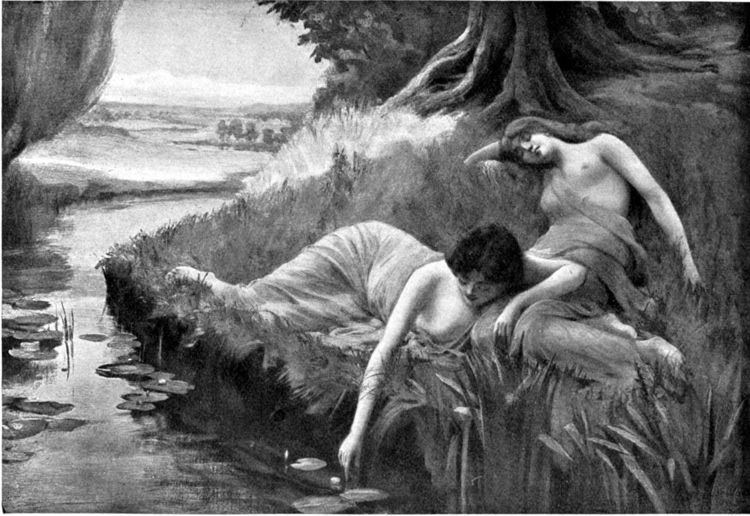 | ||
A hulder is a seductive forest creature found in Scandinavian folklore. (Her name derives from a root meaning "covered" or "secret".) In Norwegian folklore, she is known as huldra ("the [archetypal] hulder", though folklore presupposes that there is an entire Hulder race and not just a single individual). She is known as the skogsrå "forest spirit" or Tallemaja "pine tree Mary" in Swedish folklore, and ulda in Sámi folklore. Her name suggests that she is originally the same being as the völva divine figure Huld and the German Holda.
Contents
The word hulder is only used of a female; a "male hulder" is called a huldrekall and also appears in Norwegian folklore. This being is closely related to other underground dwellers, usually called tusser (sg., tusse). Whereas the female hulder is almost invariably described as incredibly, seductively beautiful, the males of the same race are often said to be hideous, with grotesquely long noses.
Folklore
The hulder is one of several rå (keeper, warden), including the aquatic sjörå or havsfru, later identified with a mermaid, and the bergsrå in caves and mines who made life tough for the poor miners.
More information can be found in the collected Norwegian folktales of Peter Christen Asbjørnsen and Jørgen Moe.
Relations with humans
The hulders were held to be kind to charcoal burners, watching their charcoal kilns while they rested. Knowing that she would wake them if there were any problems, they were able to sleep, and in exchange they left provisions for her in a special place. A tale from Närke illustrates further how kind a hulder could be, especially if treated with respect (Hellström 1985:15).
Origins
Associated with Christianity, a tale recounts how a woman had washed only half of her children when God came to her cottage; ashamed of the dirty ones, she hid them. God decreed that those she had hidden from him would be hidden from humanity; they became the hulders.
Toponyms
A multitude of places in Scandinavia are named after the Hulders, often places by legend associated with the presence of the "hidden folk". Here are some examples showing the wide distribution of Hulder-related toponyms between the northern and southern reaches of Scandinavia, and the terms usage in different language groups' toponyms.
Danish
Norwegian
Sámi
Parallels
The hulder may be connected with the German holda.
